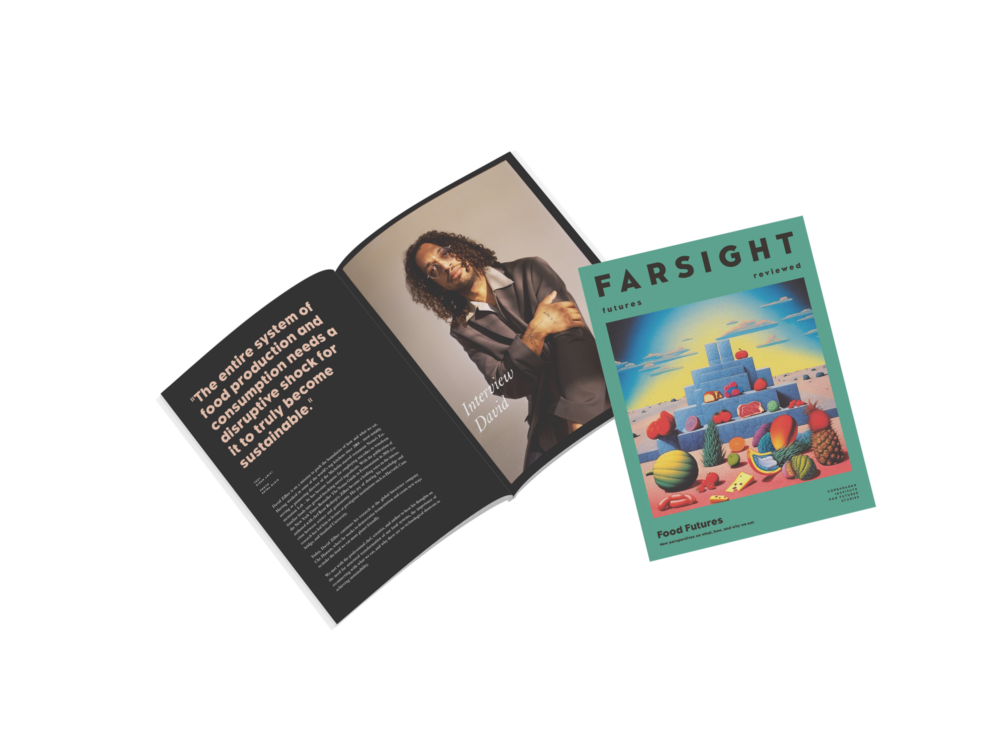
In turn, we use cookies to measure and obtain statistical data about the navigation of the users. You can configure and accept the use of the cookies, and modify your consent options, at any time.

Is the Digital Advertising Industry a Bubble Waiting to Burst?
A scrutiny of the attention economy’s backbone.
It is estimated that we are exposed to 4,000 – 10,000 online advertisements each day. Whether while seamlessly switching tabs, scrolling through social media, or simply using search engines, we experience a torrent of attempted persuasion. Within 1/6 of a second of loading a webpage (less than the time it takes to blink) you are logged into a commodity market where your attention is assigned a price by the forces of supply and demand. You may have just been checking what your friends were doing during the weekend, but your decision-making ability is being harvested, influenced, and monetised. The lifeline of today’s internet is digital advertising – the resource that fuels it is your attention.
Polemics against digital advertising often focus on surveillance capitalism and data privacy regulation – but what if this internet lifeline is, in fact, decayed itself? What on the surface seems to be an all-powerful machine able to compartmentalise our attention along lines of interests, hobbies, and personality, may be nothing more than a veil for a marketplace fundamentally flawed at its core. Or in economic terms, the actual underlying value of the assets powering digital advertising (our attention) might be vastly overstated in the marketplace itself. A bubble waiting to burst.

Broaden your horizons with a Futures Membership. Stay updated on key trends and developments through receiving quarterly issues of FARSIGHT, live Futures Seminars with futurists, training, and discounts on our courses.
become a futures memberIt’s controversial to argue that digital advertising might not work to the extent people believe it does. This is especially true for those sold by the supposed effectiveness of programmatic advertising, where software is leveraged to automate and personalise the ad-exchange market. In the context of big tech and surveillance capitalism, such automation takes the role of an omnipotent and dutifully venerated god. Drawing inspiration from financial markets, the ad economy not only benefits from the personalised advertising we welcome upon accepting third-party cookies, but the auction that occurs between competing algorithms on the behalf of ad publishers and ad-inventory buyers. As of 2022, over 90% of digital advertising is programmatic. This, in the long term, is unsustainable.
Or so argues Tim Hwang, author of The Sub-Prime Attention Crisis. Hwang posits that the ad economy’s inspiration from financial markets risks paralleling the 2008 subprime mortgage crisis, where certain mortgage-backed securities were nowhere near as risk-free as investors thought. There are several compelling reasons for this comparison, ranging from those nestled in technical jargon to the misguided incentives of ad buyers and sellers. However, for the sake of simplicity, two arguments may be considered: ad fraud and market opacity.
The presence of ad fraud is expected to cost the industry upwards of $100bn worldwide by 2023 – a growth of 285% since 2018. The most effective forms of ad fraud consist of click-farms and, depending on who you ask, ad-blockers. Click-farms occur when website owners who earn pay-outs based on users’ ad click-throughs artificially increase activity, either by using automated scripts (bots) or hiring people to manually click or pose interest in a topic. The problem with click-farms is not easily fixed, as ad publishers have little incentive to crack down on a fraud mechanism that they indirectly generate money from.
Ad-blockers, on the other hand, are less explicitly fraudulent, consisting of a devaluation of attention from the user out of personal choice. Citing reasons of intrusiveness, website lag, and perhaps most of all data privacy, browser extensions such as AdBlock Plus provide internet users with an internet experience devoid of any advertisements – or as the CEO of the Interactive Advertising Bureau has called it: “robbery, plain and simple.” Claims of fraud aside, the rise of adblockers nonetheless diminish the value of ads. Daily user statistics flouted by publishers become effectively worthless – what’s the use in displaying ads on a website if they won’t even reach a significant percentage of the intended target audience? AdBlock users are mostly among younger age groups, with some estimates suggesting that as many as 42% of those aged between 16-24 use an adblocker online.
Beyond the diminishing value of attention, the advertising market is also worryingly opaque. Market bubbles form when a commodity’s value is not adequately reflected by its publicly traded price. Economists assume markets are efficient only when there is ‘perfect information’ available to buyers and sellers – the less transparent a market is, the more vulnerable it is to misvaluation. As in financial markets, not all ad buyers play by the same rules. The existence of Private Marketplaces (PMPs), where publishers agree on a privately traded price with an ad buyer out of the public eye, distorts the market and results in the public price of ad inventory not reflecting the actual market price. This problem is not relegated to a small set of the global ad economy either; as of 2022, 17.8% of digital display ad spending was conducted on PMPs. Combined with ad fraud and a rising trend of apathy – or even irritation – towards ads, opacity is a fertile breeding ground for market failure.
What are the consequences of overvaluation? Looking at digital ad revenue figures as a percentage of total revenue for the largest tech companies, there is a clear dependency on attention. Approximately 97% of Meta’s and 80% of Google’s total revenue comes from digital advertising – the majority of which is programmatic. A realisation that attention is not as valuable as previously thought would be felt not only across cyberspace, but across the economy at large. Big tech companies constitute the apex of the global stock market and are major investors in innovative technologies such as artificial intelligence, machine learning, and even quantum computing. A burst of this bubble would be felt throughout society.
Hwang proposes that there are two ways out of the ad economy’s bubble, either by letting the bubble burst or by provoking a manageable crisis. The former solution is complicated by the fact that the ad economy’s problems are so chronic and structurally integrated that greater awareness won’t provoke internal change. Waiting for an inevitable bubble burst will, on the other hand, provide opportunities for alternative business models to flourish. In the abstract, the option might seem attractive – it’s not particularly demanding and has the odd romantic veneer of a bystander watching an empty building coming crashing down.
Unfortunately, this building is occupied. Economic implosions have real-life consequences, and letting the ad market collapse and leaving the aftermath to market processes creates new risks. The safer (but perhaps less flashy) route of a “manageable crisis” demonstrates instead how tension in the ad market is a creeping cascade of mistrust and devaluation, rather than a sudden awareness that homeowners can’t pay back their mortgages en masse. The faulty mechanisms can therefore be stepped down gradually, especially if an independent oversight and research committee is created to support this process, similar to the US Securities and Exchanges Commission (SEC) set up after the Wall Street Crash of 1929.
Capital’s historical plasticity should remind us of the ability of markets to mould themselves to accommodate cultural shifts, however. Thus, Hwang’s dual approach risks missing a potential third exit route instigated by the development of the internet towards a decentralised, open, and barebones structure. These sets of attributes, loosely defined as ‘web3’, are partly a rejection of the way advertising has become the bedrock of our current version of the internet (web2), tracing, among other things, the decline of the internet’s openness to when we unassumingly began trading our data for free access to internet platforms.
The rise of adblockers is a testament to this cultural shift, as are the decisions of some social media platforms, such as Twitter under Elon Musk, to move towards subscription-based business models. Likewise, Apple’s acquiescence to its users’ data privacy demands in 2021 by letting them ‘opt-out’ of third-party app tracking reportedly cost Meta $10 billion in ad revenue alone. Big tech firms are aware that users are increasingly dissatisfied with today’s internet and are in turn portraying themselves as pioneers of the ongoing web3 evolution.
If the ad economy moves away from the economic problems of programmatic advertising, there is still plenty of room for critique of the industry as a whole – is advertising really a necessary condition for modern life? Why have we accepted this state of affairs seemingly without question? For those holding such concerns, corporations openly supporting a future internet that ‘gives power back to the people’ should be met with scepticism. As the Slovenian philosopher Slavoj Žižek notes, ideology is strongest when it is “no longer experienced as ideology,” where “we feel free, because we lack the very language to articulate our unfreedom.”
Global brands understand that marketing is more than just targeted advertising – but also about image and appearance. The perfect ad campaign is not programmatic or targeted. It’s one where a consumer becomes an advertisement themselves and their identity entangled with a brand. Upon examining the proposed architecture behind web3 – blockchain technology – one is met by a swarm of familiar names: the virtual NIKELAND universe; the NFTs of Coca-Cola and Louis Vuitton; the virtual bank of JP Morgan & Chase. It would be disingenuous to suggest that these are the characteristics of the kind of internet that AdBlock users, or those against surveillance capitalism, want.
The metaverse’s integration of our virtual and physical worlds provides a seamless, unassuming advertising experience, dependent on a public convinced they are not even being advertised to. Or, as the French philosopher Guy Debord proclaimed, “spectacle is the sun that never sets over the empire of modern passivity.”
In the immediate term, a market bubble threatens the billions of dollars big tech firms have invested in expanding their businesses into technologies relevant to web3: the metaverse, artificial intelligence, and blockchain, among others. This can perhaps be viewed as a precautionary measure taken by an industry aware of their overwhelming dependency on ads. For these platforms, the race is won by outpacing the ad bubble that current revenue streams might be dependent on, while at the same time generating revenue from their new branches of business. From the perspective of data privacy activists however, such a development shouldn’t necessarily be welcomed by a sigh of relief. By attempting to monopolise entire virtual ecosystems, personalised data will be just as – if not more – valuable.
If the current ad economy is near the bubble-bursting conditions that Hwang argues, then decision-makers ought to use this fragility to transition from an economic argument to a moral and political one. Tomorrow’s internet is being created today; if we desire a cyberspace where our attention and identity are intact, then passivity is not an option.